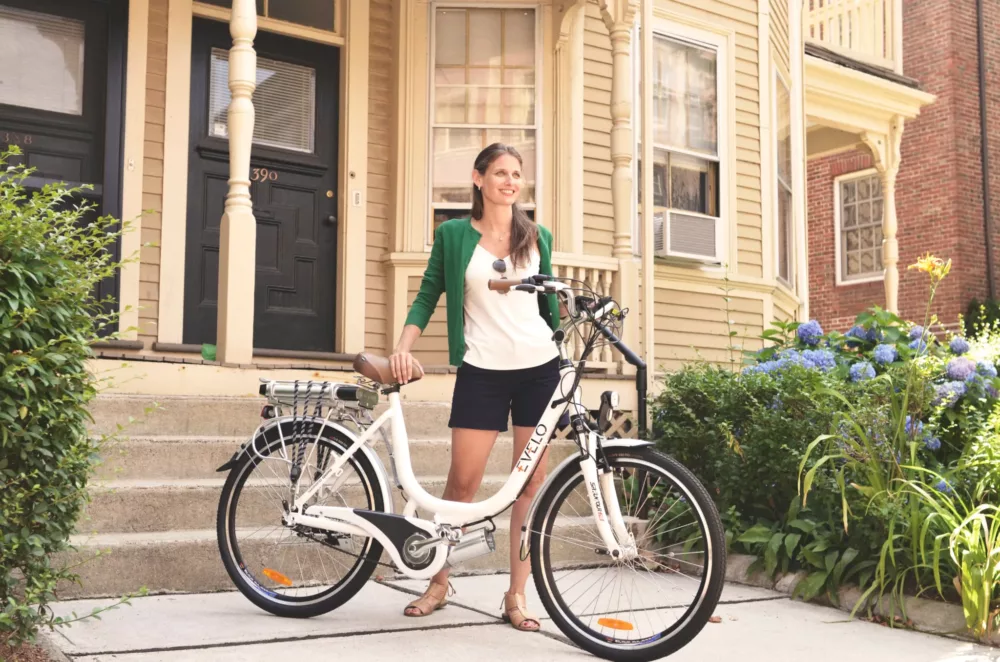Urban transportation is undergoing a significant transformation, with a growing emphasis on sustainable and eco-friendly alternatives. Among these alternatives, commuter e-bikes are emerging as a game-changer.
With their electric assistance, affordability, and convenience, commuter e-bikes are poised to become the future of urban transportation. In this article, we'll explore why e-bikes are gaining momentum and how they can revolutionize the way we commute in cities.

1. E-bikes: The Basics
Before we dive into the reasons why commuter e-bikes are the future of urban transportation, let's first understand what e-bikes are:
Commuter ebikes are bicycles equipped with an electric motor that provides assistance to the rider when pedaling. This motor can be activated or deactivated, allowing riders to choose between purely pedal-powered mode or an electric-assist mode.
Now, let's explore why these e-bikes are gaining popularity among urban commuters.
2. Environmental Benefits
One of the primary reasons why commuter e-bikes are the future of urban transportation is their positive impact on the environment:
a. Zero Emissions
Unlike cars or motorcycles that rely on fossil fuels, e-bikes are emission-free. They are powered by electricity, which can be sourced from renewable energy, making them a clean and green transportation option.
b. Reduced Air Pollution
E-bikes contribute significantly less to air pollution compared to automobiles. In congested urban areas, this can lead to improved air quality and reduced health risks for residents.

3. Cost-Effective Commuting
Commuting in a bustling city can be expensive, but e-bikes offer a cost-effective alternative:
a. Lower Operating Costs
E-bikes are much cheaper to operate and maintain than cars. Charging an e-bike's battery costs a fraction of what it takes to fill up a gas tank or maintain a car.
b. No Parking Fees
Finding parking in urban areas can be a nightmare, not to mention the cost of parking fees. E-bikes eliminate this hassle as they can be parked almost anywhere, often for free.
4. Health Benefits
Commuting on an e-bike can also have a positive impact on your health:
a. Promotes Physical Activity
While e-bikes provide electric assistance, riders still pedal and engage in physical activity. This can help improve cardiovascular health and overall fitness.
b. Stress Reduction
E-bike commuting can be less stressful than sitting in traffic jams or navigating congested public transportation. The freedom and fresh air can reduce stress levels and improve mental well-being.
5. Increased Accessibility
E-bikes make urban transportation more accessible to a wider range of people:
a. Reduced Physical Effort
E-bikes are particularly beneficial for individuals who may have physical limitations that make traditional biking challenging. The electric motor provides assistance, reducing the physical effort required to pedal.
b. Extended Range
E-bikes can cover longer distances than traditional bicycles, making them a viable option for those with longer commutes or living farther from their workplace.

6. Time Efficiency
Time is a precious resource in urban life, and e-bikes can help you make the most of it:
a. Avoiding Traffic Jams
E-bikes can weave through traffic jams and congested streets, often taking shortcuts that cars cannot. This can significantly reduce commute times.
b. No Waiting for Public Transportation
With an e-bike, you don't have to wait for buses or trains to arrive. You can start your journey whenever you want, and you won't be tied to public transportation schedules.
7. Reduced Congestion
Urban congestion is a significant issue in many cities, leading to wasted time and increased stress. E-bikes can play a role in reducing congestion:
a. Smaller Footprint
E-bikes take up less space on the road and in parking areas compared to cars. This means less congestion and a smoother flow of traffic.
b. Less Pressure on Public Transport
As more people switch to e-bikes, there will be reduced pressure on already overcrowded public transportation systems, improving the overall commuting experience for everyone.
8. Environmental Sustainability
As cities strive to become more sustainable, commuter e-bikes align with these goals:
a. City Planning
E-bikes can encourage city planners to prioritize bike lanes and infrastructure, making urban areas more bike-friendly and reducing the need for expansive car infrastructure.
b. Reduced Dependence on Cars
The adoption of e-bikes can lead to a shift away from car dependency, reducing the need for sprawling parking lots and highways that harm the environment.
9. Enhanced Commuting Experience
Commuter e-bikes offer an enhanced and enjoyable commuting experience:
a. Enjoyable Ride
Riding an e-bike is a pleasant experience. You get to enjoy the outdoors, breeze through traffic, and arrive at your destination feeling refreshed.
b. Convenient Cargo Options
Many e-bike models come with cargo racks and panniers, making it easy to carry groceries, work essentials, or other items without the need for a car.
10. Evolving Technology
The technology behind e-bikes is constantly advancing, making them even more appealing:
a. Improved Battery Life
Modern e-bike batteries have longer lifespans and can provide more miles per charge, reducing the frequency of recharging.
b. Connectivity Features
Some e-bikes are equipped with smartphone apps and GPS tracking, allowing you to plan routes, monitor your bike's performance, and stay connected while riding.
11. Safety Considerations
Safety is a paramount concern in urban transportation, and commuter e-bikes offer several advantages in this regard:
a. Lower Speeds
E-bikes typically have lower maximum speeds compared to cars and motorcycles. This can reduce the severity of accidents and injuries in case of collisions.
b. Maneuverability
E-bikes are more agile than cars and can navigate through tight spaces, helping riders avoid potential accidents and hazards on the road.
c. Helmets and Protective Gear
Just like traditional bicycles, riders of e-bikes are encouraged to wear helmets and protective gear, further enhancing their safety while commuting.
d. Increased Visibility
Many e-bikes come equipped with lights and reflective materials, improving visibility during low-light conditions or at night.
12. Community and Social Benefits
Commuter e-bikes also offer a range of community and social benefits that contribute to a more vibrant and connected urban environment:
a. Social Interaction
E-bike commuting can foster social interactions among riders. Commuters often form e-bike groups or clubs, creating a sense of community and camaraderie.
b. Noise Reduction
Compared to noisy cars and motorcycles, e-bikes produce minimal noise pollution, contributing to a quieter and more peaceful urban atmosphere.
c. Reduced Traffic Congestion
As more people switch to e-bikes, the overall traffic congestion in cities can decrease. This results in smoother traffic flow, reduced honking, and a less stressful urban experience.
d. Economic Benefits
A growing e-bike industry can generate jobs in manufacturing, maintenance, and sales. Additionally, reduced car usage can lead to savings for individuals and cities in terms of road maintenance and infrastructure costs.
In conclusion, commuter e-bikes are poised to become the future of urban transportation due to their numerous advantages. From reducing environmental impact and cost-effective commuting to promoting physical health and improving the overall urban experience, e-bikes address a wide range of challenges faced by urban dwellers.
As technology continues to advance and cities invest in e-bike infrastructure, the adoption of e-bikes is expected to soar. By embracing this eco-friendly and efficient mode of transportation, individuals and cities can contribute to a more sustainable and enjoyable urban future.
So, whether you're a daily commuter or simply looking for a greener way to get around, consider the many benefits of commuter e-bikes and join the movement towards a smarter and more sustainable urban lifestyle.





Leave a Reply